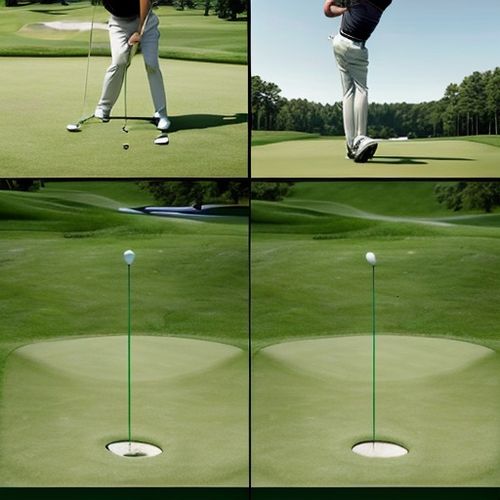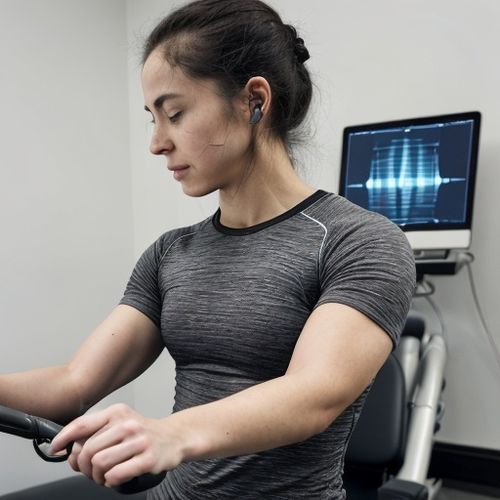Electromyographic (EMG) feedback, a technique that measures electrical activity produced by skeletal muscles, has emerged as a transformative tool in rehabilitation, sports science, and even mental health. By providing real-time data on muscle activation, this technology bridges the gap between conscious effort and physiological response. Its applications range from helping stroke patients regain motor control to optimizing athletic performance. The growing accessibility of wearable EMG devices has further democratized its use, allowing both clinicians and individuals to harness its potential.
The science behind EMG feedback is rooted in the electrical impulses generated during muscle contraction. When a muscle fiber is activated, it produces a detectable voltage change. Surface electrodes placed on the skin capture these signals, which are then amplified and processed. Advanced algorithms filter out noise, isolating the relevant muscle activity. This processed data is presented to the user in an intuitive format, often through visual or auditory cues. The immediacy of this feedback loop enables users to refine their movements with unprecedented precision.
Rehabilitation medicine has been one of the primary beneficiaries of EMG feedback technology. Patients recovering from neurological injuries, such as strokes or spinal cord damage, often struggle with disrupted communication between the brain and muscles. Traditional therapy relies heavily on repetitive exercises, but progress can be slow and frustrating. EMG feedback provides these patients with tangible evidence of even minor muscle activation, reinforcing their efforts and accelerating recovery. Clinicians report that patients using EMG-assisted therapy frequently demonstrate improved engagement and faster functional gains compared to conventional methods alone.
Beyond clinical settings, elite athletes have incorporated EMG feedback into their training regimens with remarkable results. The technology allows coaches to identify muscle imbalances or inefficient movement patterns that might otherwise go unnoticed. For instance, a sprinter might discover asymmetrical activation in their glutes during acceleration, prompting targeted corrective exercises. Similarly, weightlifters can use real-time EMG data to ensure optimal muscle recruitment during complex lifts. This level of biomechanical insight was unimaginable just a decade ago, and it’s reshaping how peak performance is achieved.
The psychological dimensions of EMG feedback are equally fascinating. Chronic pain conditions, such as tension headaches or fibromyalgia, often involve maladaptive muscle tension patterns that become ingrained over time. Biofeedback therapists use EMG to help patients recognize and consciously reduce unnecessary muscle activity. This mind-body approach has shown particular promise in stress-related disorders, where physical tension and psychological distress feed into each other. By learning to modulate their muscle activity, patients often experience a parallel reduction in anxiety symptoms, highlighting the profound interconnectedness of physiological and mental states.
Technological advancements continue to push the boundaries of what EMG feedback can achieve. Early systems required bulky equipment and expert interpretation, but modern iterations include sleek, wireless sensors that sync with smartphone apps. Machine learning algorithms can now distinguish between subtle activation patterns associated with different movements or emotional states. Researchers are even exploring the integration of EMG with virtual reality, creating immersive environments where muscle activity directly influences digital interactions. These innovations promise to make EMG feedback more intuitive and impactful than ever before.
Despite its potential, EMG feedback is not without limitations. Signal quality can be affected by factors like skin moisture or electrode placement, requiring proper setup for accurate readings. Interpretation of the data demands some expertise, particularly when distinguishing between normal variations and clinically significant patterns. Moreover, while the technology is becoming more affordable, high-end systems remain costly for individual consumers. These challenges underscore the importance of continued research and development to enhance accessibility and reliability.
The future of EMG feedback appears exceptionally bright, with emerging applications in fields as diverse as prosthetics control, ergonomics, and even gaming. As the technology becomes more sophisticated and user-friendly, its potential to enhance human performance and well-being seems limitless. From helping a paralyzed individual grasp a cup to fine-tuning an Olympian’s start technique, EMG feedback exemplifies how technology can amplify our understanding and mastery of the human body. Its evolution will undoubtedly continue to surprise and inspire, offering new ways to bridge intention with action.

By William Miller/May 9, 2025

By John Smith/May 9, 2025

By Lily Simpson/May 9, 2025

By Eric Ward/May 9, 2025

By Eric Ward/May 9, 2025

By Victoria Gonzalez/May 9, 2025

By Samuel Cooper/May 9, 2025

By Emily Johnson/May 9, 2025

By Noah Bell/May 9, 2025

By Joshua Howard/May 9, 2025

By Eric Ward/May 8, 2025

By Joshua Howard/May 8, 2025

By George Bailey/May 8, 2025

By Grace Cox/May 8, 2025

By Michael Brown/May 8, 2025

By Daniel Scott/May 8, 2025

By Rebecca Stewart/May 8, 2025

By Victoria Gonzalez/May 8, 2025

By Emily Johnson/May 8, 2025

By Olivia Reed/May 8, 2025